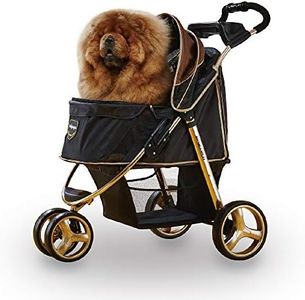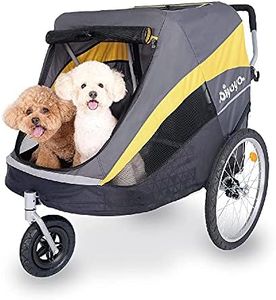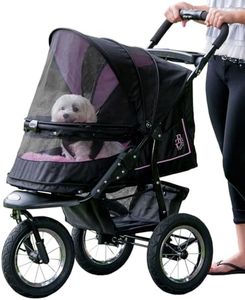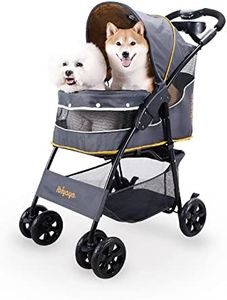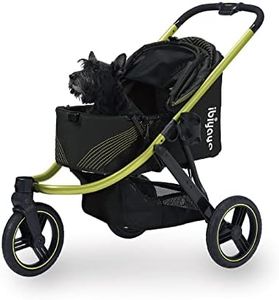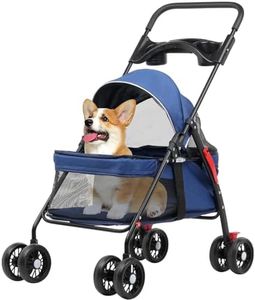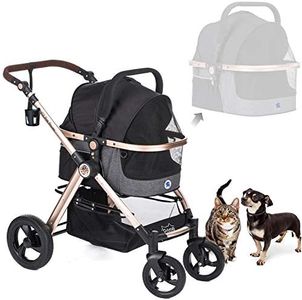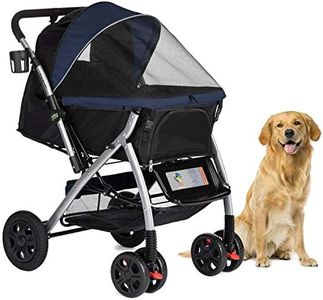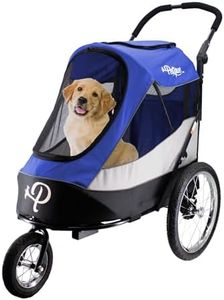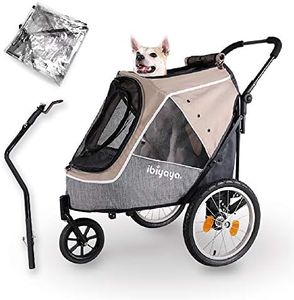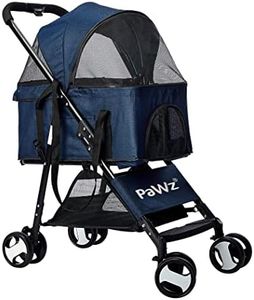We Use CookiesWe use cookies to enhance the security, performance,
functionality and for analytical and promotional activities. By continuing to browse this site you
are agreeing to our privacy policy
10 Best Dog Strollers
From leading brands and best sellers available on the web.Buying Guide for the Best Dog Strollers
Choosing the right dog stroller makes outings more enjoyable and comfortable for both you and your pet. When shopping, consider your dog's size, weight, and temperament, as well as where you plan to use the stroller—whether on city sidewalks, park paths, or rougher terrain. The right stroller keeps your dog safe, provides easy handling, and fits your lifestyle. It's important to focus on a few key specifications so that the stroller fits your dog's needs and your own preferences for convenience and comfort.Weight CapacityWeight capacity refers to the maximum weight the stroller can safely carry. This is crucial because overloading a stroller can make it unsafe or cause it to wear out quickly. Strollers often come in ranges like under 20 lbs (for small breeds or puppies), 20-50 lbs (for medium dogs), and over 50 lbs (for large dogs or multiple pets). To select the right weight capacity, check your dog's current weight and, if your pup is still growing, consider a bit of extra room for future gains or items you may carry along.
Stroller Size and Cabin DimensionsThe size and cabin dimensions determine how much space your dog has to sit or lie down comfortably. A cramped space may make your pet anxious, while too much room might not provide enough security, especially for smaller dogs. Generally, small strollers suit toy breeds, medium ones for breeds like cocker spaniels, and large ones for Labs or pairs of smaller dogs. Measure your dog’s length and height while resting and compare it to the cabin size. Always go for a little extra room if your dog likes to stretch out.
Wheel Type and SuspensionThe wheels and whether the stroller has a suspension system affect the ride's smoothness and the stroller’s maneuverability across different surfaces. Small plastic wheels work well for smooth, urban pavements, while larger, air-filled, or rubber wheels with suspension suit rough or off-road terrain. If you'll mostly walk in parks, go for bigger wheels and good suspension. For shopping malls or smooth sidewalks, standard wheels are usually enough.
Folding Mechanism and PortabilityThis spec describes how easily the stroller folds and how compact it becomes for storage or transport. Some strollers offer one-hand folding or automatic fold options that are great for quick errands or frequent car travel, while others may require more effort. If you have limited storage or need to lift the stroller often, look for a lightweight design and easy folding mechanism.
Safety FeaturesSafety features may include harness attachment points inside the cabin, secure zippers or latches, rear brakes, and reflective strips for night visibility. These features keep your pet securely inside, prevent rolling on slopes, and help you be seen in low light. If your dog is particularly active or anxious, prioritize extra-secure closures and harness ties to avoid escapes.
Ventilation and Weather ProtectionGood ventilation is provided by mesh panels, which allow sunlight and air to reach your pet, and protect against bugs. Weather protection may include canopies or rain covers. Consider how you'll use the stroller: if you'll go out in different weather, choose one with adjustable covers and ample mesh for airflow. For short strolls in mild climates, basic mesh and canopy may be all you need.
Storage SpaceMany dog strollers have baskets or pockets for holding pet supplies, water bottles, and your personal items. Depending on the length of your outings or if you plan to carry extras like treats, toys, or shopping bags, more or less storage will be important. If you need your hands free or often multitask during walks, pick a stroller that offers ample and easily accessible storage.
